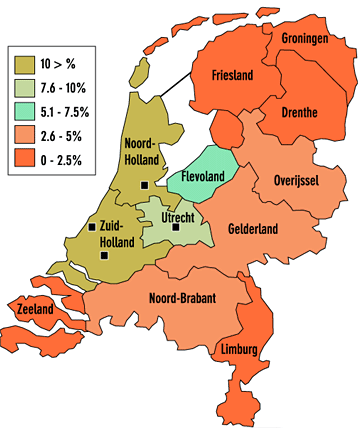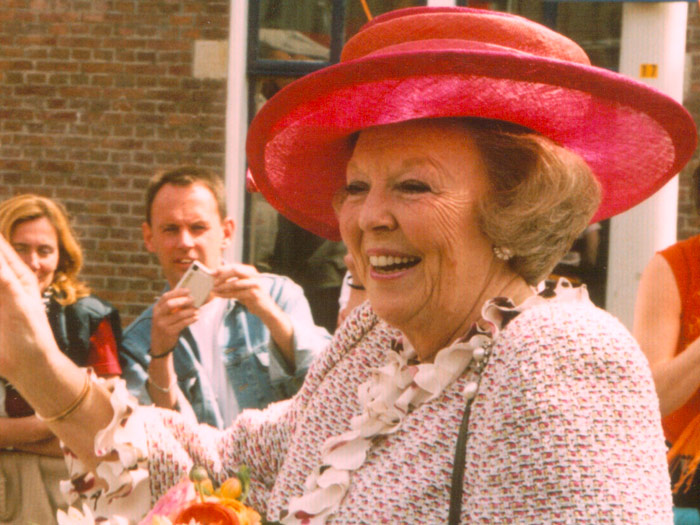
Immigrants in the Netherlands
The Netherlands, the most densely populated country in Europe, has a population of sixteen million inhabitants. More than three million of them have a non-Dutch background. Little more than half of these three million immigrants, i.e. 1.7 million people, is of non-Western origin.
The Netherlands and the five most important (non-Western) migration countries.
The majority of non-Western immigrants come originally from Turkey, Surinam, Morocco and the Netherlands Antilles and Aruba (people from the former Dutch Indies and Japan are considered Western immigrants). Together they make up 67% of non-Western immigrants. The non-Western immigrant groups are unequally spread over the country. Most immigrants live in the West of the country. While only 12.5% of all inhabitants live in one of the four major cities (Amsterdam, Rotterdam, The Hague and Utrecht), 40% of non-Western immigrants live there. For that reason, in cities like Amsterdam or Rotterdam, almost one in three people is of non-Western origin.
Spread non-Western immigrants in the Netherlands
Little less than half of all immigrants in the Netherlands (1.4 million people) have a Western background. These so-called Western immigrants originally come from other European countries (except Turkey), the United States, Indonesia, Japan and Australia.
Another way to classify immigrants is to describe them as first generation immigrants or second generation immigrants. First generation immigrants are born outside the Netherlands, whilst second generation immigrants are born in the Netherlands and have at least one foreign-born parent. There are several disadvantages to this classification or definition. A first disadvantage is that people who are born in the Netherlands, have lived there for their entire life, and are fully integrated will continue to be viewed as (second, third etc generation) immigrants. Another disadvantage of this classification is that it is very broad. Following this definition, even the current queen on the Kingdom of the Netherlands, Queen Beatrix, is a second generation immigrant. Even though Beatrix herself was born in the Netherlands, the queen's father, Prince Bernhard, a first generation immigrant, was born in the German town of Jena.
Queen Beatrix>Click here to read about the history of immigration in the Netherlands.

